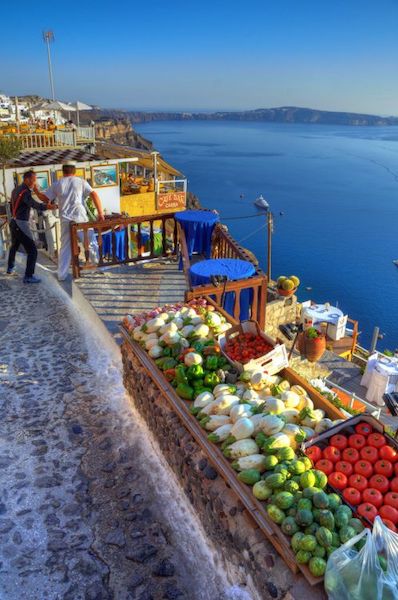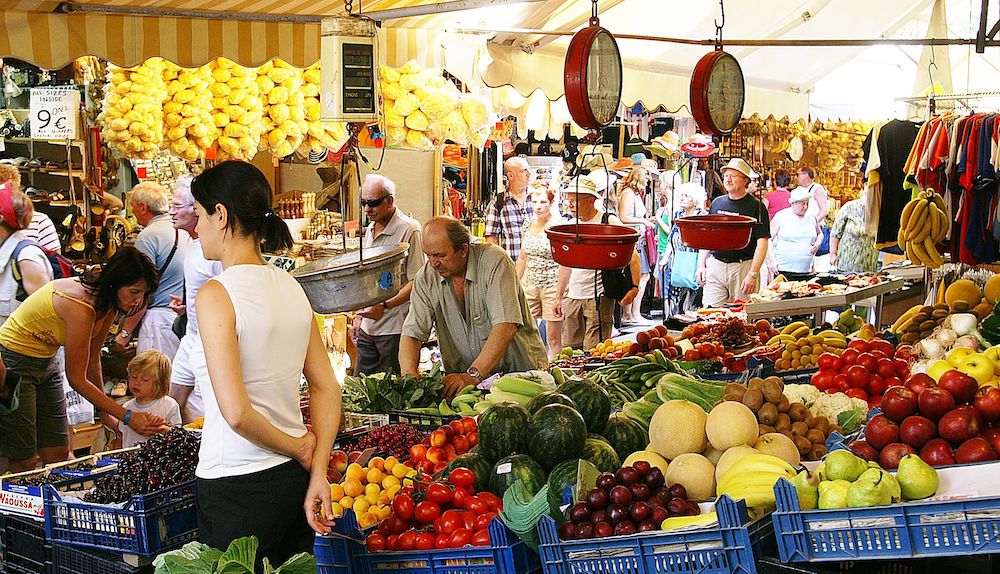Thanks (or the opposite of thanks?!) to coronavirus, many of us are cooking a lot more than usual. But at least here in Greece, we couldn’t be luckier in terms of having delicious, nutritious and easily-available options, as well as some super-special treats because really, what is life without a few indulgences? So, let’s look at how to eat like a Greek.
Good for people, animals and the planet
Fruit, grains, olives/olive oil, vegetables, herbs, beans, lentils and peas… These staples are at the heart of Greek horticulture which is at the heart of the ideal Greek diet. The Greek/Mediterranean diet is touted as one of the world’s healthiest and it is actually very easy to follow.
(Bonus: A plant-based diet is also better both for animal welfare as well as for the environment!)
The conventional Greek diet does include fish and meat, but in very limited quantities (no more than four-to-five times per month) and, in places where this diet is still largely followed, longevity and good health prevail.
The Greek farmer’s market: A weekly must

Around the country, locals enjoy perusing and sampling the land’s seasonal abundance at the classic weekly farmers’ markets, which are held once a week in each area. This ubiquitous market is called the laiki agora and some are lucky enough to have two such weekly markets in their vicinity: one for conventional produce and the other for organic. Shoppers can fill their carts with a profusion of fresh whole foods to cook (or eat raw) without emptying their wallets.
It’s not all greens and beans
Of course there are Greek treats too ….
• Sweet, aromatic honey (thyme, heather, chestnut and pine, to name just a few of the numerous varieties)
• Fabulous wine (My personal favorites are the volcanic wines of Limnos and Santorini.)
• All the cheese you can imagine (Feta is just the tip of the iceberg. There is also graviera, kasseri, mizithra, anthotiro, metsovone, kefalograviera and more! Nutty, buttery, lemony, smoky, sweet and salty … we have it all!)
• Creamy and tangy yogurt (drizzled with honey and delicious Greek walnuts, if you must ….)
No self-respecting Greek island or rural area is without at least few varieties of honey, cheese, wine or yoghurt. And yes, we do dessert too …. Some Greek desserts are borrowed from Turkey and the Middle East and others are all our own. Between your local supermarket, bakery (fournos) and sweet shop (zaharoplasteio), you can usually find at least a few of the popular classics listed below. Furthermore, there are recipes for each treat online if you are feeling ambitious or just need a sweet break from the quarantine blues!
• portokalopita (orange pie), galatopita (milk pie), karidopita (spiced walnut cake), semolina halva (wheat-based dessert flavored with cinnamon, cloves, honey, raisins and nuts), glyka tou koutaliou (spoon sweets– fruits [and sometimes certain nuts and vegetables] boiled with sugar and served in a sweet syrup), loukoumades (doughnut balls doused in honey and nuts and served warm) and rizogalo (rice pudding), to name but a few.
Greek on the go
For a quick and tasty bite, Greece has its own versions of fast food. Most bakeries offer fresh bread all day long, as well as individual muffins, cake slices and savory pies (cheese pie, spinach pie, zucchini pie, mushroom pie, chicken pie and more!), all easily wrapped to go.
Souvlaki means ‘little skewer’ and the countless Greek souvlaki eateries are often no-frills places, selling mostly seasoned and skewered pork or chicken and a few sides. The meat is generally served one of two ways:
• plain, on a small wooden skewer, with half a lemon and few pita slice
• with the pieces of meat wrapped in a palm-sized round grilled pita along with sliced tomatoes, tzatziki (garlicky yoghurt sauce), French fries, parsley and onions.
Meat-lovers are not without an easy option on the go and some souvlaki places also offer simple vegetarian and vegan fare, such as grilled halloumi (a semi-hard and very yummy Cypriot cheese) or bell pepper souvlaki options, as well as falafel sandwiches and mushroom or other meat substitutes.
Cook like a Greek
Wherever you are, chances are that you can quite easily source the ingredients for some great Greek meals. Below are a few ideas. Many recipes for each dish can easily be found online.
• Start with a fresh and filling Dakos salad (rusk/bread salad with tomatoes) and, for the main course, serve Eggplant Papoutsakia (Little Shoes), which is basically the classic moussaka dish made easy.
• A classic simple but bright horiatiki (village) salad followed by Spetzofai (sausages, onions, green peppers and wine– a dish which originated in the Mount Pelion region) is a special combination.
• As an appetizer, serve a delicious creamy tiropita (cheese pie) and continue with a gorgeous green spanakorizo (spinach rice stew), accompanied by feta cheese and some crusty bread.
• Super-satisfying stuffed Florina peppers followed by minty Greek keftedes (meatballs) are sure to be a hit as well.
• Here’s a great recipe for baked Gigantes, giant baked beans by my friend Chef Carolina Doriti. This is is another tasty and healthy alternative to the more well-known Greek fare.
You can see more great recipes and posts about the foodie scene and food tours of Athens here on Culinary Backstreets.
• For a day when you need some literal or metaphorical warming, try a special soup – Trahana (cracked wheat with fermented milk) – accompanied by the equally unique flavor of Eliopsomo (olive bread). (Locals can also pick up this bread at many Greek bakeries.)
• For a fully vegan Greek meal, treat yourself to some flavorful and super-healthy Horta (greens), tomatokeftedes (tomato fritters) and rice- and herb-stuffed tomatoes and peppers.
• Psarosoupa (classic Greek fish soup, which is full of veggies) accompanied by freshly-boiled beets is an unbeatable combination and an instant favorite for most who try it.
Kalo magirema! (Happy cooking!)

About the author:
A Pittsburgher by birth, Christina T. Hudson is also half Greek and has – so far – spent most of her life in Athens, the chaotic but captivating capital city of Greece. She studied Language and Literature at Moravian College and has worked as a teacher, an editor, a writer and a photographer.
You can see more of her work here at A Pixel for Your Thoughts.
You can see more of her posts here.
See more about Greece in Dispatches’ archive here. See our Athens archive here
A Pittsburgher by birth, Christina T. Hudson is also half Greek and has – so far – spent most of her life in Athens, the chaotic but captivating capital city of Greece.















